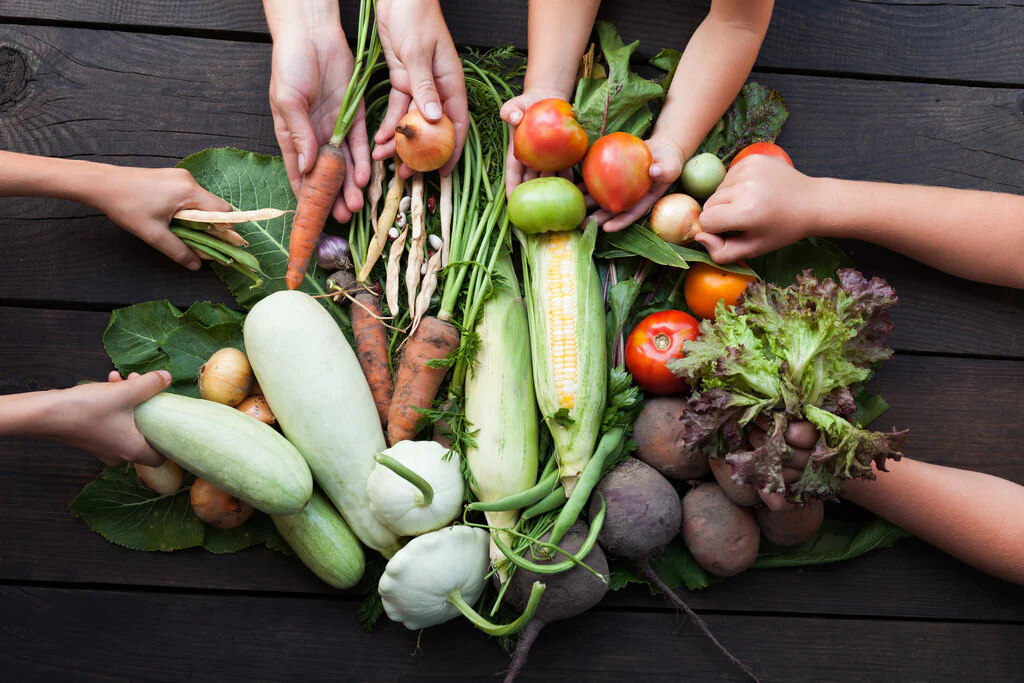I. Introduction
As climate change and the impact of human activities on the environment become more pressing, it’s time we reevaluate our food choices and the ingredients we use. A more sustainable and eco-friendly approach to food consumption is needed to preserve our planet for future generations. World of sustainable ingredients and explore their benefits, types, and examples. So, let’s begin our journey toward a greener and healthier future!
II. What are Sustainable Ingredients?
Sustainable ingredients are raw materials used in food products produced and sourced in an environmentally friendly, socially responsible, and economically viable manner. These ingredients minimize their impact on the planet and support the well-being of local communities and ecosystems.
III. Importance of Sustainable Ingredients
Sustainable ingredients are essential for various reasons, including environmental, health, and ethical benefits.
A. Environmental Benefits
Sustainable ingredients help reduce the strain on natural resources like water, land, and energy. They promote biodiversity, reduce pollution, and minimize greenhouse gas emissions, ultimately combating climate change.
B. Health Benefits
Sustainably sourced ingredients often have higher nutritional value and fewer chemical additives, contributing to a healthier diet. Choosing sustainable ingredients also means supporting a more holistic approach to food production, where animal welfare, fair labour practices, and food safety are prioritized.
C. Ethical Benefits
Embracing sustainable ingredients encourages fair labour practices, animal welfare, and the protection of indigenous peoples’ rights. It also supports small-scale farmers and promotes a more equitable distribution of resources.
IV. Types of Sustainable Ingredients
Sustainable ingredients can be categorized into plant-based, animal-based, and recycled/upcycled.
A. Plant-based Ingredients
Plant-based ingredients are derived from plants, which are more sustainable than conventional animal-based ingredients due to their lower environmental footprint.
B. Sustainable Animal-based Ingredients
These are sourced from animals raised in ethical and environmentally conscious systems, such as free-range, organic, or regenerative agriculture practices.
C. Recycled and Upcycled Ingredients
Recycled and upcycled ingredients are made from food byproducts or waste, preventing them from ending up in landfills and reducing the overall environmental impact of food production.
V. Key Examples of Sustainable Ingredients
The following are examples of sustainable ingredients that you can incorporate into your daily diet.
A. Legumes
Legumes, such as beans, lentils, and peas, are a sustainable source of protein, fibre, and essential nutrients. They require less water and emit fewer greenhouse gases than animal-based protein sources.
B. Quinoa
Quinoa, a gluten-free grain, is a complete protein source rich in essential amino acids, fibre, and minerals. It is drought-resistant and can grow in various environments, making it a sustainable crop.
C. Algae and Seaweed
Algae and seaweed are nutrient-dense, renewable sources of protein and omega-3 fatty acids. They can be cultivated without needing freshwater, arable land, or synthetic fertilizers, making them highly sustainable options.
D. Insects
Insects, such as crickets, mealworms, and grasshoppers, are a sustainable source of protein, vitamins, and minerals. They require significantly less water, land, and feed than conventional livestock, emitting fewer greenhouse gases.
E. Lab-grown Meat
Lab-grown meat, or cultured or cell-based meat, is produced by cultivating animal cells in a lab rather than raising and slaughtering animals. This process could reduce the environmental impact and ethical concerns associated with conventional meat production.
VI. Sustainable Packaging for Ingredients
Sustainable packaging plays a crucial role in reducing the environmental footprint of food products. Opting for biodegradable, compostable, or recyclable packaging can minimize waste and pollution.
VII. Certifications and Labels for Sustainable Ingredients
When shopping for sustainable ingredients, look for certifications and labels that verify their sustainability, such as Fair Trade, USDA Organic, Non-GMO Project Verified, or Rainforest Alliance Certified.
VIII. Challenges in the Sustainable Ingredients Industry
Despite the growing interest in sustainable ingredients, challenges exist, such as higher costs, limited availability, and the need for increased consumer awareness and education.
IX. The Role of Consumers in Promoting Sustainable Ingredients
Consumers play a vital role in promoting sustainable ingredients by making informed choices, supporting responsible brands, and spreading awareness about the importance of sustainability in food production.
X. The Future of Sustainable Ingredients
As awareness about sustainable ingredients’ environmental, health, and ethical benefits grows, more innovative solutions and technologies will likely emerge. This will help to make sustainable ingredients more accessible, affordable, and mainstream, paving the way for a greener and healthier future.
XI. Conclusion
Sustainable ingredients are crucial in addressing our pressing environmental, health, and ethical challenges. By incorporating these ingredients into our diets, we can support a more sustainable food system, improve our health, and contribute to a better future for our planet and its inhabitants.
XII. FAQs
1. What are some other examples of sustainable ingredients?
Some other examples include mushrooms, nuts, seeds, ancient grains like amaranth and millet, and alternative sweeteners like stevia or coconut sugar.
2. Are all organic products sustainable?
While organic products generally follow more sustainable practices, it’s essential to consider other factors such as packaging, transportation, and fair labour practices when evaluating sustainability.
3. Can I grow sustainable ingredients at home?
Yes! Growing your fruits, vegetables, and herbs is an excellent way to contribute to sustainability while enjoying fresh, seasonal produce.
4. How can I find sustainable ingredients at my local grocery store?
Look for products with sustainability certifications or labels and choose brands prioritizing environmentally friendly and socially responsible practices.
5. How can I help promote sustainable ingredients?
By making informed choices, supporting responsible brands, and spreading awareness about the importance of sustainability in food production, you can help promote sustainable ingredients.
